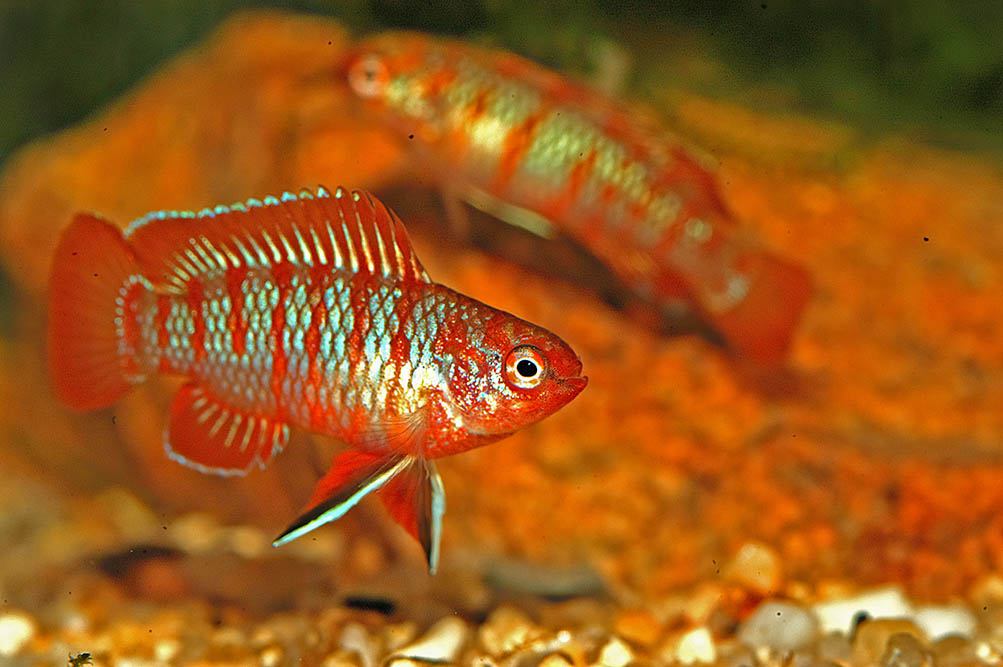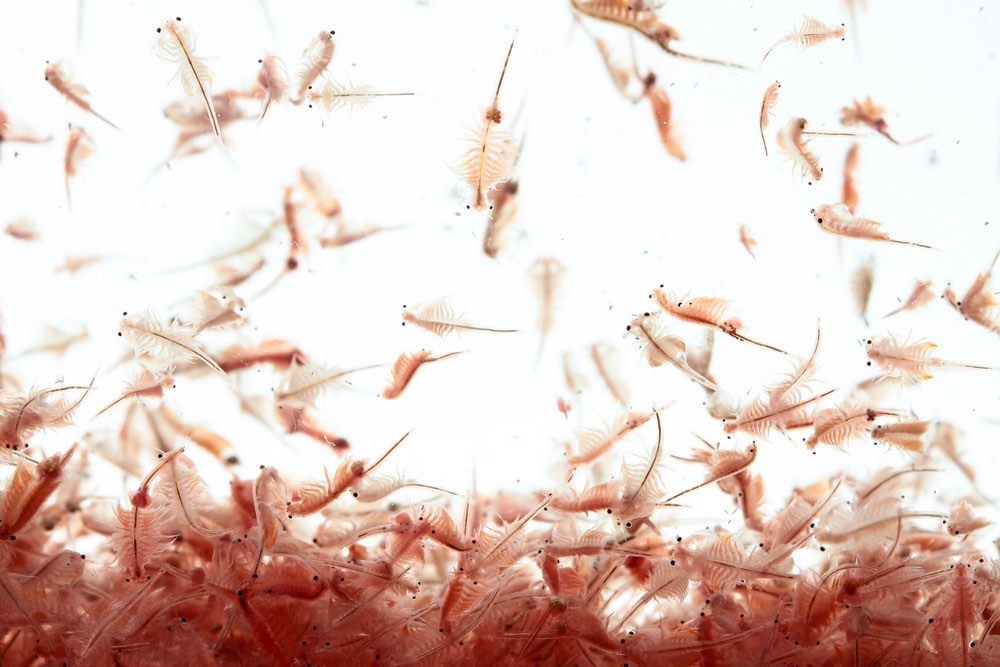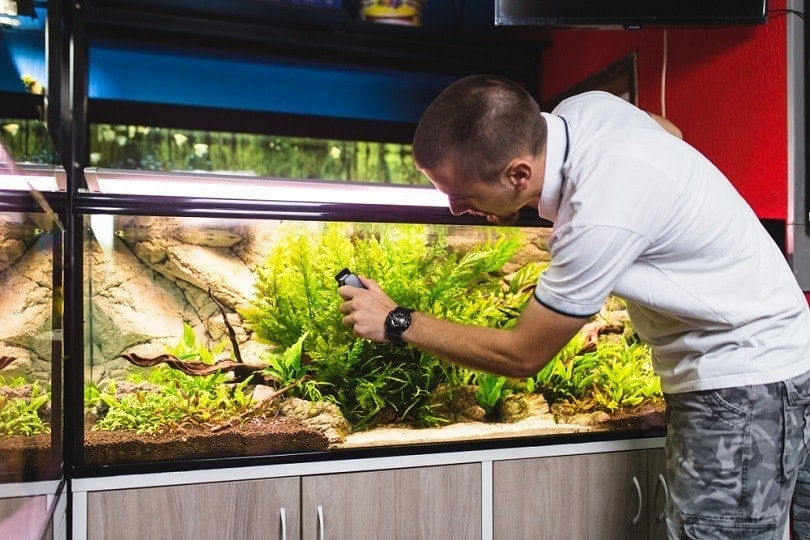Freshwater Eels: Care Guide, Facts, Varieties, Lifespan & More

Updated on
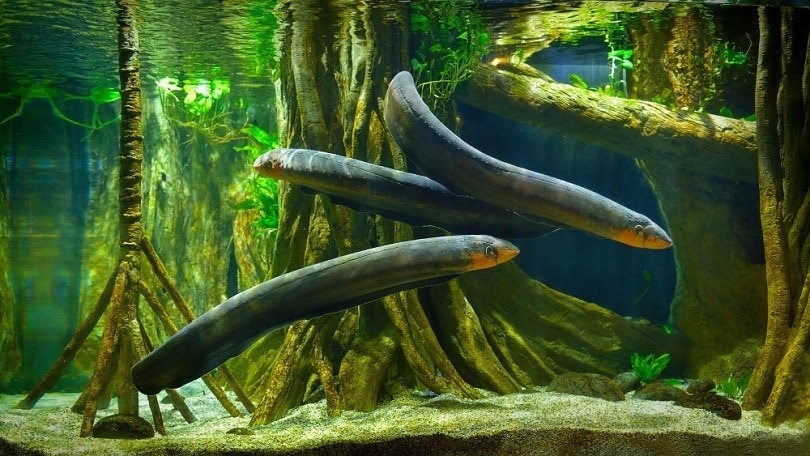
If you’re an experienced fishkeeper, or just someone looking for a challenge, then freshwater eels may be an exciting addition to your aquarium. There are over 800 species of eels in the world, but only about a dozen are routinely kept in the freshwater aquarium trade. Even then, they are not an everyday sighting at pet stores or fish stores. That’s because freshwater eels aren’t for everyone! They have specific needs and can be a handful, so here are the things you need to know about freshwater eels before bringing one home.
Quick Facts About Freshwater Eels
| Species Name: | >20 species |
| Family: | Anguilliformes |
| Care Level: | Moderate to difficult |
| Temperature: | 72-82˚F |
| Temperament: | Timid to aggressive |
| Color Form: | Brown, olive, yellow, off-white, orange, black |
| Lifespan: | 5-20 years |
| Size: | 8 inches to 8+ feet |
| Diet: | Carnivorous |
| Minimum Tank Size: | 30 gallons |
| Tank Set-Up: | Warm freshwater tanks with soft substrate; Long term, these fish require brackish water |
| Compatibility: | Non-aggressive tropical or brackish fish that cannot be eaten by the eel |
Freshwater Eels Overview
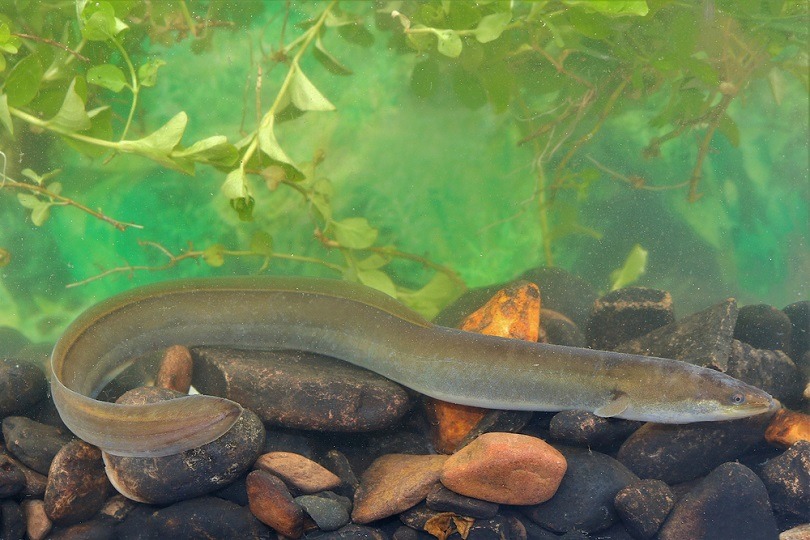
Freshwater eels are ray-finned fish that are often misunderstood. There are lots of fish that are often associated with being eels, like Kuhli loaches, Black Ghost Knifefish, and even Electric Eels, but they are not truly eels. Eels are described as being snake-like bony fish that do not have pelvic fins and have smooth, slimy skin. Their median fins are confluent around the tail, meaning the fin is one continuous fin from the back around the tip of the tail and onto the belly.
One issue that comes up when discussing freshwater eels is that no eels are truly freshwater. In nature, all eels spend at least part of their life in brackish or marine waters. What this means is that keeping an eel in a freshwater tank for years on end will shorten its life expectancy. Obviously, this brings on a new level of commitment and stewardship when it comes to keeping freshwater eels. That, coupled with the fact that they aren’t great tank mates to many other types of fish and invertebrates, means eels should only be taken on by someone willing to put the time and effort into their specialized care.
How Much Do Freshwater Eels Cost?
Generally speaking, you will be able to find a freshwater eel for about $15 in big box stores. Locally owned stores may have them for around this price, but they are likely going to be slightly more expensive. That’s going to be for very basic eels and eel-like fish, though. There are rarer and more sought-after varieties of freshwater eel that can easily cost $600 or more.
Typical Behavior & Temperament
Most eels are nocturnal and enjoy burrowing, so they can often be spotted with only their head or snout sticking out of the substrate. During daylight hours, they will likely remain scarce, preferring to come out when the lights are dim.
Behavior-wise, it is not uncommon for freshwater eels to be aggressive, semi-aggressive, or territorial. Tire track eels and some other varieties are peaceful when kept with other peaceful tank mates and make nice additions to some community tanks. Regardless of temperament, eels are carnivorous and tend to be very opportunistic feeders, which means that fish, amphibians, and invertebrates small enough to be eaten are at a high risk.
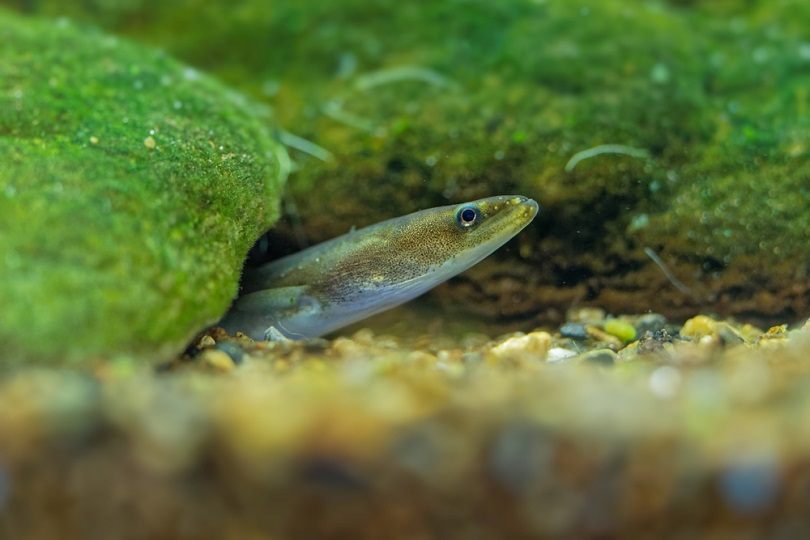
Appearance & Varieties
There are around a dozen fish marketed as eels that show up in the aquatics trade, although most of them are not true eels. Here are some of the fish you may see under the “eel” name in fish stores.
- Tire Track Eel – Named for the patterns across their body, these eels are ray-finned fish that are marketed as eels but are not true eels. They are also sometimes called the Zig Zag eel. These fish can reach over 2 feet in length, making them quite large for most home aquariums.
- American Eel – A true eel, the American eel can be kept in home aquariums but only in a tank with a tight-fitting lid. Otherwise, they will almost certainly escape. Females are much larger than males, reaching around 6 feet in length while males only reach about 2 feet in length.
- Peacock Eel – Not true eels, Peacock eels are beautiful and agreeable, making them a good pick for community tanks and first-time keepers of eels and eel-like fish. They only reach around 12 inches in length, so they are more manageable than some other options.
- Fire Eel – Fire eels are also not true eels, instead being spiny ray-finned fish. They can reach over 3 feet in length, making them a poor option for most fish keepers. They are predatory and may not make good tank mates in community tanks.
- Rice Eel – Not true eels, Rice eels are also called Asian Swamp eels. They are known to inhabit rice paddies and are air breathers. These fish have become an invasive species in places like Florida thanks to irresponsible ownership in the aquatics trade. They can exceed 3 feet in length, so they outgrow most people’s home tanks.
- Half Banded Spiny Eel – Also not true eels, these fish only reach around 8 inches in length at maturity. This makes them a great eel-like option for home aquariums since they are not likely to outgrow most tank environments. They are known to be escape artists and should be kept in tanks with tight-fitting lids.
- Electric Eel – Probably the most famous eel of the not-actually eels, these fish can exceed 8 feet in length and are able to produce around 500 volts of electricity from their body. They have poor vision and in the wild, they use electrical currents to understand their environment. In captivity, they should be handled with care and ideally should be kept alone.
- Freshwater Snowflake Eel – The name of this true eel is a misnomer because they actually are not truly freshwater. They only spend a short portion of their life in freshwater in the wild and should not be kept long term in freshwater. These eels have sharp teeth and should be handled with care.
How to Take Care of Freshwater Eels
Habitat, Tank Conditions & Setup
Tank/Aquarium Size
It’s recommended to keep full-grown freshwater eels in tanks that are at least 30 gallons. For larger varieties of eels, this can increase exponentially, especially when they are varieties that can exceed multiple feet in length.
Water Temperature & pH
Most eels are tropical, so they prefer a water temperature of around 72-82˚F. They can tolerate a small pH range of 6.5-7.5, but adult freshwater eels can generally tolerate slightly alkaline water up to a pH of 8.0.
Substrate
Freshwater eels love to burrow, so a soft substrate they can burrow in is best. Sand, dirt, or peat are ideal. They can be kept with small gravel, but there is a risk they will scratch their skin on gravel.
Plants
Since freshwater eels like to burrow, many planted plants will not stay planted for long. This means that plants that prefer to be attached to surfaces, like Java fern and Anubias, are good picks. The best plants to add to a freshwater eel’s tank are floating plants as these will help decrease light reaching the tank floor.
Lighting
Since freshwater eels are nocturnal, they prefer a dimly lit tank. During the day, they will likely not be out and about, but it is important to not blast the tank with bright lighting as this may disturb them.
Filtration
In the wild, freshwater eels live in places with slow-moving waters that are usually shallow. If needed, baffles can be used to prevent a strong current in the tank. They require highly oxygenated water but can breathe surface air as well.

Are Freshwater Eels Good Tank Mates?
As a rule, freshwater eels can be good tank mates when kept in peaceful community tanks where they can’t eat the other inhabitants. Keeping freshwater eels with aggressive or territorial fish like cichlids can lead to problems, though. Eels usually inhabit the tank floor and the lowest part of the water column. This means that they can be great tank mates in a tank with fish that inhabit the middle and upper parts of the water column without venturing too far into the lower water column. Exceptions to this can be peaceful algae eaters, like Plecostomus. If they stay out of the freshwater eel’s territory, there shouldn’t be any issues.
What to Feed Your Freshwater Eels
Freshwater eels are mainly carnivorous. They can eat plant matter but do not prefer it and they cannot survive long-term without high protein, meaty foods. They like bloodworms, red wigglers, nightcrawlers, and small invertebrates like shrimp and snails. Meaty foods should make up the bulk of a freshwater eel’s diet. They will usually take to eating thawed frozen foods or freeze-dried foods. Feeding them these types of food ensures they’re able to eat the food. They appreciate live foods from time to time, but this shouldn’t make up the majority of their diet unless it’s the only way you can feed the eel without tank mates stealing the food.
Keeping Your Freshwater Eels Healthy
To stay healthy, freshwater eels should be kept in a low stress environment. They need to be able to burrow and will appreciate caves and rocky outcrops that provide them with hiding places. They should not be kept with other fish that will fight or compete for territory.
The best way you can keep freshwater eels healthy is by providing them with the appropriate tank environment. Keeping them in freshwater for their entire life will shorten their lifespan. If you decide to take on a freshwater eel, it’s a good idea to start planning ahead for when and how you will transition them to a brackish environment. Most freshwater aquarium inhabitants won’t be able to safely and comfortably transition to a brackish or marine environment with the eel.
Breeding
Breeding freshwater eels is no easy task and is not advisable for most aquarists. There are scientific breeding programs across the world to help prevent the extinction of some threatened species of eels. If kept in a suitable environment, freshwater eels may spawn for you. However, there is an entire life cycle they go through before reaching adulthood and little is known about some of the middle stages. It is known that spawning usually occurs in saltwater. After hatching, the larval young usually stay in marine water or enter brackish water. At some point, they return to freshwater as juveniles, but they will return to the salty water at various points throughout their life. Interestingly, most true eels will die after reproducing.
Are Freshwater Eels Suitable For Your Aquarium?
Freshwater eels are not for the faint of heart and they are more than a commitment of time and money. Taking in a freshwater eel is also a commitment to provide them the healthiest life possible, including thorough research and planning for providing a non-freshwater environment later in their life.
Freshwater eels are interesting fish that are intuitive and can learn to recognize patterns and people. This means that they will learn their feeding schedule and may even come out to greet you during feeding time. They are interesting fish that are underestimated and misunderstood. If you decide the commitment of a freshwater eel is for you, then you are also taking on the responsibility of educating yourself and others on their needs and, in some circumstances, furthering their species through breeding.
Check out some of our other tank life species care guides:
- Siamese Algae Eater: Care Guide, Varieties, Lifespan & More (with Pictures)
- Neon Tetras: Care Guide, Pictures, Varieties, Lifespan & More
Featured Image Credit to: tristan tan, Shutterstock





